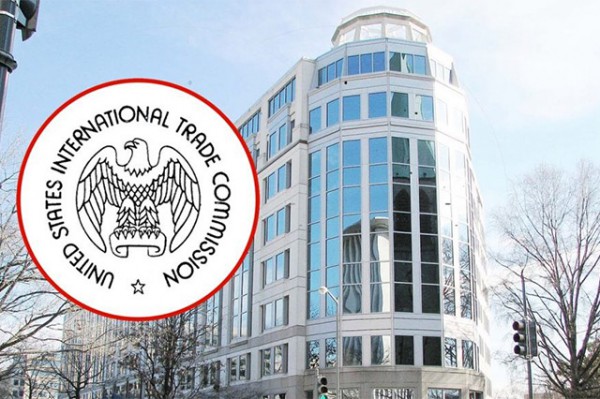USITC review reflects ups and downs in global trade
The US International Trade Commission’s Year in Trade report for 2016 ( >> download the report from the link alongside) shows mixed results among free trade agreement partner countries and preference program nations.
At the same time, the ITC has continued to vigorously enforce trade laws and regulations last year as part of its federal responsibilities.
U.S. imports under the Generalized System of Preferences program increased 5.6% to $18.7 billion in the year, accounting for 0.9% of total U.S. imports. The top five beneficiary countries–India, Thailand, Brazil, Indonesia and the Philippines–accounted for 75 percent of GSP imports, while Burma’s eligibility for GSP benefits was reinstated during the year.
In 2016, 38 sub-Saharan African countries were eligible for benefits under the African Growth & Opportunity Act and 28 were eligible for AGOA textile and apparel benefits. Burundi’s designation as an AGOA beneficiary was terminated and a determination was made to reinstate AGOA eligibility for the Central African Republic.
Last month, the Office of the United States Trade Representative said it will be looking at whether Tanzania, Uganda and Rwanda should still be eligible to receive duty and tariff free benefits under AGOA.
Imports entering the U.S. exclusively under AGOA, excluding GSP, increased 17.8% to $9.4 billion. The top two major petroleum-producing AGOA beneficiary countries, Nigeria and Angola, both experienced increases in the value and quantity of their exports of crude petroleum to the U.S. under AGOA.
Seventeen countries and dependent territories were eligible for preferences under the Caribbean Basin Economic Recovery Act and eight were eligible for Caribbean Basin Trade Partnership Act preferences. U.S. imports under CBERA fell 43.2% to $876 million, mainly reflecting a decline in U.S. imports of apparel, methanol and crude petroleum, which are major imports from CBERA countries.
Trinidad & Tobago remained the leading supplier of U.S. imports under CBERA at 43.8% of the total value, followed by Haiti at 36.3% and Jamaica at 8.6%. U.S. imports of apparel from Haiti fell 5.2% to $848.5 million, but the value of such imports entering under the HOPE acts grew 7.5% to $535.0 million.
Two-way goods trade between the U.S. and its FTA partners amounted to $1.4 trillion, or 39.1% of total U.S goods trade. Canada and Mexico made up 75 percent of this amount and the U.S. goods trade deficit with these countries fell 1.2% to $75.3 billion. The Trump administration has begun talks to renegotiate NAFTA.
U.S. goods trade with other FTA partners declined 5.2% to $356.2 billion and the U.S. registered a $3.1 billion surplus in such trade, down 74.4% from 2015.
The value of U.S. imports entered under FTAs and subject to FTA duty reductions and eliminations rose 0.3% to $374.2 billion. Imports under FTAs accounted for 50 percent of total imports from FTA partners and 17.1% of total U.S. imports from the world. The largest increase in imports under an FTA was with South Korea (95.3%), followed by Oman (35.8%) and Panama (31.9%).
The value of goods exports fell 3.3% to $1.45 trillion, while goods imports lost 2.6% to $2.19 trillion, resulting in an overall goods trade deficit of $735.5 billion. The U.S. registered trade surpluses in agricultural products ($9.3 billion) and services ($250.6 billion).
In the area of trade enforcement, the ITC instituted 36 new antidumping injury investigations and made 35 preliminary determinations and 41 final determinations, and AD duty orders were issued on eight products from 16 countries. Sixteen new preliminary counterveiling duty injury investigations were launched, with 14 preliminary and 25 final determinations, and CV duty orders were issued on seven products from seven countries. The ITC instituted 53 sunset reviews of existing AD and CV duty orders and suspension agreements and completed 53, resulting in 47 orders being continued for up to five additional years.
There were 122 active section 337 investigations and ancillary proceedings, 80 of which were new. Roughly 30 percent of active investigations involved telecommunications and computer equipment, followed by small consumer items (14 percent), automotive, transportation and manufacturing products (11 percent), pharmaceuticals and medical devices (11 percent), and consumer electronics (7 percent). A total of 66 investigations and ancillary proceedings were completed, resulting in three general exclusion orders, nine limited exclusion orders, and 11 cease-and-desist orders.
Of the 17 new requests for dispute settlement consultations filed with the World Trade Organization, the U.S. was involved in three as the complainant and five as the respondent. There were eight new dispute settlement panels established, including one at the request of the U.S. and one against the U.S.


